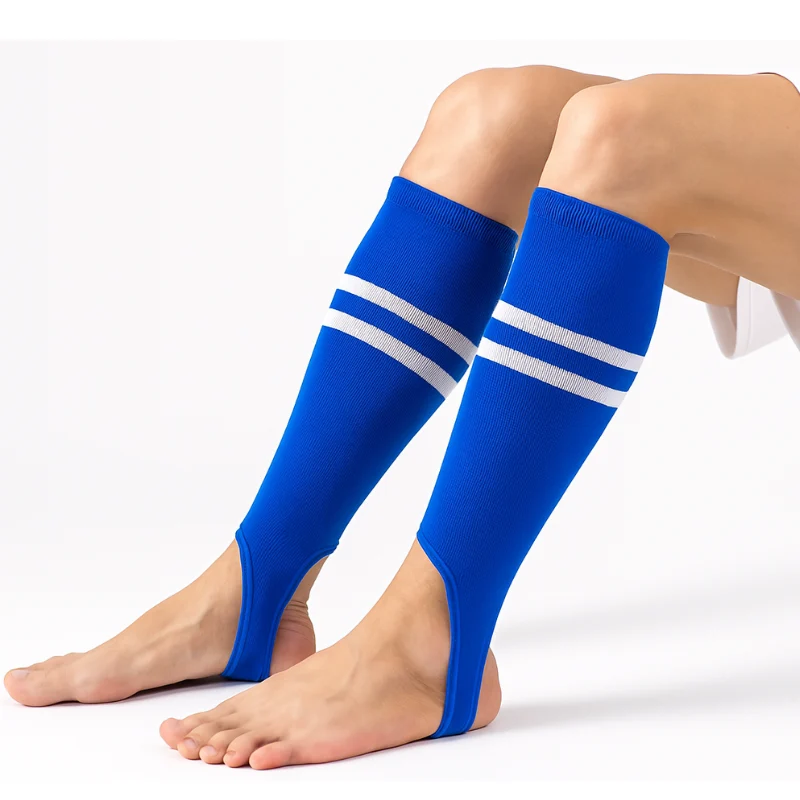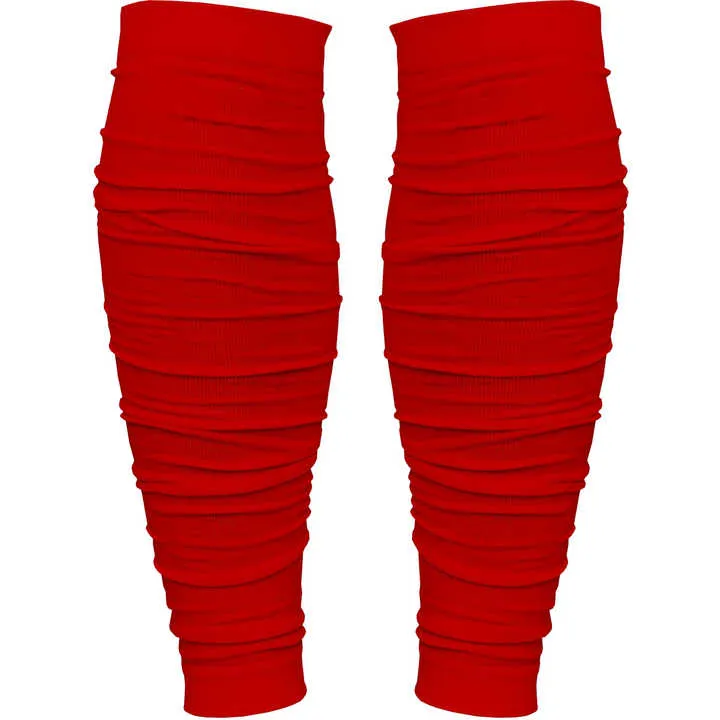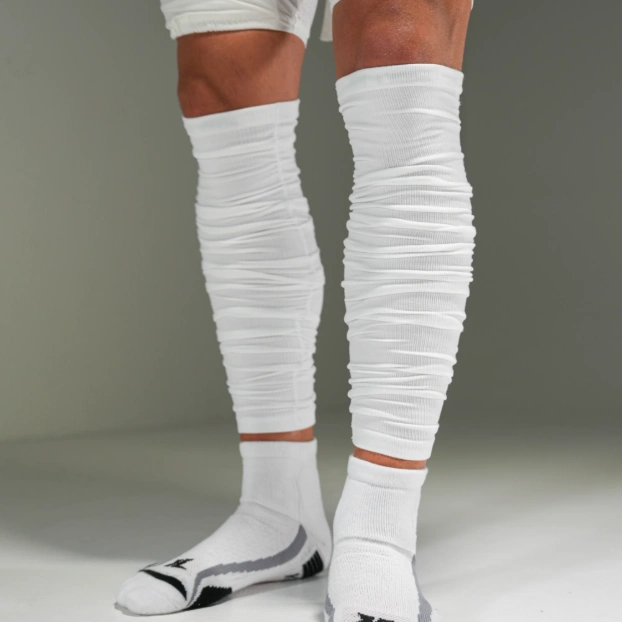Introduction: The Multifunctional Nature of Football Sleeves
Football sleeves have become ubiquitous on fields across all levels of play, from youth leagues to professional stadiums. What began as simple arm coverings has evolved into sophisticated performance gear with multiple functions and benefits. Modern football sleeves represent the intersection of athletic performance science, material innovation, and practical on-field utility. Far beyond mere fashion statements, these specialized garments serve crucial purposes that enhance player capabilities while providing essential protection. This comprehensive guide explores the various purposes of football sleeves, examining how they contribute to performance enhancement, injury prevention, comfort, and even psychological advantages for players in different positions and playing conditions.

The Evolution of Football Sleeves
From Simple Coverings to Performance Technology
The journey of football sleeves from basic arm warmers to advanced performance equipment reflects the sport’s overall technological evolution. Early iterations were simple fabric tubes designed primarily for warmth during cold-weather games. As sports science advanced, manufacturers began incorporating compression elements, moisture-wicking materials, and anatomical designs that enhanced functionality. Today’s football sleeves represent cutting-edge textile engineering, with some variants featuring biometric sensors that monitor player performance metrics in real-time. This transformation illustrates how seemingly simple equipment pieces have become sophisticated tools in the modern athlete’s performance arsenal.
Position-Specific Adaptations Through the Years
As football became increasingly specialized by position, sleeve designs evolved to address the unique demands of different roles. Quarterbacks sought sleeves that provided warmth without restricting throwing mechanics, leading to asymmetrical designs that offered different compression levels between throwing and non-throwing arms. Receivers developed preferences for sleeves that enhanced grip without interfering with ball catching, while linemen required durability to withstand constant physical engagement. These position-specific adaptations demonstrate how football sleeves have become highly specialized equipment rather than generic accessories, with designs tailored to enhance performance in specific on-field responsibilities.
Performance Enhancement Properties
Muscle Compression and Stabilization Benefits
Football sleeves provide targeted compression that wraps around key muscle groups—typically the quadriceps, hamstrings, and calf muscles—helping to stabilize soft tissues during explosive movements. When players sprint, change direction, or leap to contest a catch, their muscles naturally oscillate under impact. This oscillation expends extra energy and accelerates fatigue. By applying consistent pressure, a well-fitted sleeve reduces this micro-vibration, allowing more efficient force transfer from muscles to the turf. Research shows that wearing compression sleeves during repeated high-intensity efforts can diminish power loss, enabling athletes to maintain speed and strength deeper into the game. This stabilization is particularly valuable late in games; as natural fatigue sets in during the fourth quarter, properly supported muscles retain mechanical efficiency longer, lowering injury risk from lapses in form or delayed muscle response.
Temperature Regulation Across Weather Extremes
Football is played year-round, subjecting athletes to scorching summer heat or biting winter cold. Modern performance sleeves incorporate fabrics designed to regulate muscle temperature, ensuring consistent performance. Cold-weather sleeves often use thermal-knit blends that trap body heat close to the skin while still allowing moisture vapor to escape. This prevents tight muscles from slowing reaction times or increasing strain during sudden accelerations. Conversely, hot-weather models employ moisture-wicking yarns and breathable weaves that draw sweat away, while strategically placed mesh zones promote airflow to hot spots like the back of the knee or calf. Some advanced sleeves even integrate cooling finishes—such as mineral-infused fibers that activate upon contact with sweat—to deliver an immediate cooling sensation. By maintaining muscles near their optimal operating temperature, players experience faster reaction times, reduced cramping, and steadier endurance, regardless of sweltering afternoons or crisp evening games.
Injury Prevention Capabilities
Protection Against Environmental Factors
Football sleeves provide a vital layer of defense against the playing environment. On synthetic turf, players face a higher risk of turf burn due to friction during falls or tackles. Sleeves reduce direct skin contact, preventing painful abrasions. In colder climates, sleeves offer insulation that reduces exposure to windburn and the early onset of frostbite. Many manufacturers now include SPF fabric technology to shield players from harmful UV rays, especially during long matches in open fields. These combined benefits protect against a range of weather-related risks, helping maintain comfort and consistency in performance.
Injury Management and Prevention Features
Modern sleeves offer more than surface-level protection. Their compression properties promote circulation and minimize swelling—key during high-output activity. For players prone to overuse injuries, sleeves can reduce muscle vibration and fatigue. Some styles include foam padding at strategic points such as elbows, ideal for midfielders and defenders who engage in frequent physical contact. Medical-grade sleeves also serve as transitional gear for recovering athletes, stabilizing injured areas without restricting movement. These design features reduce downtime, prevent new injuries, and promote safer on-field engagement.
Monitoring and Replacement Best Practices
Like all athletic gear, football sleeves have a limited lifespan. Fabric tension may degrade over time, reducing compression benefits. Padding can also thin out after repeated laundering. Coaches and gear managers should inspect sleeves regularly, especially for players in contact-heavy positions. Replacing worn sleeves proactively ensures players always benefit from the full protective performance they were designed to deliver.
Material Science Advancements
Moisture Management Technologies
Advanced moisture management represents one of the most significant improvements in football sleeve functionality. Contemporary designs utilize hydrophobic fibers that actively transport sweat away from the skin to the garment’s outer surface, where it can evaporate efficiently. This wicking action helps maintain dry skin contact, reducing chafing and discomfort during extended wear. Some cutting-edge sleeves incorporate gradient moisture systems that accelerate transport in high-sweat areas while providing enhanced evaporation zones in regions with greater airflow exposure. These sophisticated moisture management capabilities ensure players remain comfortable and focused regardless of exertion level or environmental conditions.
Durability Enhancements for Game-Day Demands
The physical nature of football creates extreme durability demands for all equipment, including sleeves. Material science innovations have produced fabrics that withstand the sport’s rigors without compromising performance benefits. Reinforced stitching at stress points prevents seam failure during explosive movements, while abrasion-resistant panels protect areas subject to frequent contact. Leading manufacturers like Max Hosiery have pioneered high-performance fabric blends that maintain consistent compression levels even after repeated washing and wearing cycles. These durability advancements ensure sleeves maintain their functional benefits throughout a season of intense use, providing consistent performance advantages from opening day through playoffs.
| Feature | Benefit | Best For |
|---|---|---|
| UV Protection Fabric | Prevents sunburn and skin damage | Outdoor training in sunny environments |
| Turf Burn Resistance | Shields skin from abrasions on synthetic fields | Matches played on artificial turf |
| Cold Weather Insulation | Maintains body heat, prevents windburn | Cold climates or winter seasons |
| Compression Support | Reduces muscle fatigue and improves circulation | High-performance and recovery periods |
| Strategic Padding (Elbow/Forearm) | Protects against impacts and collisions | Defenders, goalkeepers, and frequent tacklers |
| Medical-Grade Stability | Supports injured areas while allowing mobility | Players returning from minor injuries |
Psychological and Focus Benefits
Proprioception Enhancement and Body Awareness
Beyond their physical function, football sleeves offer cognitive advantages through proprioceptive enhancement. The gentle pressure applied by compression material gives players real-time feedback on limb movement. This constant sensory input improves body positioning and coordination during play. Whether a wide receiver reaching for a catch or a lineman adjusting foot placement mid-block, proprioceptive input from sleeves promotes quicker muscle response and more accurate execution. It’s particularly beneficial during split-second actions where muscle memory must override conscious thought.

Young athletes developing foundational motor skills benefit the most, as the sleeves reinforce correct movement patterns during drills and live gameplay. In high-stress moments when mental distractions are common, this additional layer of sensory awareness keeps athletes grounded in their physical form.
Confidence and Identity Expression
Football sleeves also contribute to player psychology in ways that influence focus, composure, and self-image. For many, wearing sleeves becomes part of a ritual—sliding them on signals a mental shift into competition mode. That sensation of compression provides psychological reinforcement, telling the brain: “you’re prepared.”
In youth leagues and professional teams alike, players often choose sleeve colors or designs that resonate with their personality. Some prefer bold tones to stand out, while others stick with team-matching patterns for cohesion. Custom sleeves—bearing initials, numbers, or team logos—help athletes feel personally connected to their equipment. That emotional connection can heighten motivation and focus.
In short, football sleeves are more than a performance tool—they’re a psychological anchor. They center players mentally and physically, helping them maintain poise and sharpness across all four quarters.
Specialized Variants for Different Needs
Weather-Specific Sleeve Designs
The demands of year-round play mean footballers encounter drastically different environmental conditions—from freezing early-season matches to sweltering summer tournaments. To maintain performance in every scenario, manufacturers now offer weather-adapted sleeve variants.
Cold-weather sleeves are made from insulated, brushed fabrics that trap warmth while maintaining flexibility and compression. These variants often include elongated wrist coverage and thumb holes, helping eliminate exposure gaps between gloves and jerseys. The brushed interior feels soft against the skin and reduces the discomfort of cold-contact surfaces. Additionally, moisture-wicking layers help prevent the buildup of dampness from sweat or precipitation.
For hot climates, lightweight sleeves dominate. These versions use micro-perforated or mesh-knit synthetics that prioritize breathability and rapid sweat evaporation. Advanced styles include cooling yarns or phase-change materials that absorb body heat and regulate skin temperature in high-exertion conditions. These sleeves not only reduce overheating but also maintain consistent muscle support.
Medical and Therapeutic Applications
In addition to enhancing athletic performance, football sleeves have found a role in injury prevention and recovery. Medical-grade variants offer targeted support, particularly for players recovering from muscle strain, tendon inflammation, or joint instability. Graduated compression zones encourage proper circulation, assisting with both active play and post-match recovery.
Some sleeves come with integrated stabilizers or padding that support vulnerable areas without adding bulk. Others use infrared or silver-ion technology to stimulate cell repair, reduce inflammation, or maintain hygiene in prolonged use cases. These features are especially valuable for athletes with chronic conditions or in rehabilitation phases, offering non-invasive support that aligns with professional medical standards.
Customization for Team Needs
Beyond functionality, customization plays a critical role in the appeal of specialized sleeves. Teams can select color schemes that match uniforms, add logos for brand alignment, or modify sizing specs based on player feedback. Whether you’re outfitting a professional club or a youth academy, offering tailored solutions improves player satisfaction and ensures that equipment performs to exacting standards in any environment.
| Variant Type | Key Features | Ideal Usage |
|---|---|---|
| Cold-Weather Sleeves | Brushed interior, thermal materials, extended length, thumb holes | Winter training and early spring matches |
| Hot-Weather Sleeves | Lightweight mesh, moisture-wicking, cooling yarn or phase-change technology | Summer games and high-heat regions |
| Medical Recovery Sleeves | Graduated compression, support zones, far-infrared or silver-ion elements | Post-match recovery or injury rehab |
| Injury-Specific Sleeves | Targeted compression, built-in stabilizers, non-restrictive support structures | Muscle strains, tendonitis, joint care |
| Custom Team Sleeves | Team colors, logo printing, adjusted sizing and fit based on player needs | Clubs, schools, academies, and sponsors |
Selection and Fitting Considerations
Measuring for Optimal Compression Benefits
Achieving maximum benefits from football sleeves requires proper sizing based on accurate measurements rather than general size categories. Arm circumference measurements should be taken at multiple points, including mid-bicep, elbow, and mid-forearm, to ensure appropriate graduated compression. Length measurements from shoulder to wrist determine proper coverage without bunching or gaps. Many players mistakenly select sleeves based on their general clothing size rather than taking specific measurements, resulting in suboptimal performance and comfort. The ideal fit should feel noticeably compressive without causing discomfort, numbness, or color changes in extremities, with no restriction of natural joint movement.
Material Selection Based on Player Needs
Beyond sizing, material selection should align with individual player priorities and conditions. Those prioritizing durability should seek sleeves with higher nylon content and reinforced construction, while players focused on maximum compression might prefer higher elastane percentages. Individuals with sensitive skin benefit from seamless construction and hypoallergenic materials that minimize irritation during extended wear. Climate considerations should influence fabric weight and thermal properties, with different optimal choices for indoor facilities versus outdoor environments in various seasons. This personalized approach to material selection ensures sleeves address each player’s specific needs rather than providing generic benefits.
Maintenance and Longevity Practices
Cleaning Protocols for Performance Preservation
Proper maintenance significantly extends the functional lifespan of football sleeves while preserving their performance benefits. Hand washing in cold water with mild detergent maintains elasticity and compression properties, while machine washing should utilize gentle cycles and protective mesh bags. Players should avoid fabric softeners and bleach products that degrade elastic fibers and compromise compression delivery. Immediate rinsing after use prevents sweat salt crystals from breaking down fabric integrity over time. These careful cleaning practices ensure sleeves maintain consistent compression levels and moisture management capabilities throughout their usable life, providing reliable performance benefits for maximum duration.
Storage and Rotation Best Practices
How players store and rotate their football sleeves significantly impacts longevity and performance consistency. Sleeves should never be stored in compressed or folded positions that create permanent creases or stretch points. Instead, they should be laid flat or hung on rounded forms that maintain their natural shape. Implementing a rotation system with multiple pairs reduces individual wear frequency while ensuring clean sleeves are always available for training and matches. This rotation approach is particularly important for players who train daily, as it allows sufficient recovery time for elasticity between wearings, maintaining optimal compression levels for each use rather than experiencing gradual degradation.
Conclusion: Integrating Sleeves into Your Football Equipment Strategy
Football sleeves have evolved from simple accessories to essential performance equipment with multifaceted benefits that address numerous aspects of player performance and protection. The comprehensive advantages—from enhanced circulation and muscle support to temperature regulation and injury prevention—make them valuable components in any player’s equipment strategy. By understanding the specific benefits, selection considerations, and maintenance requirements outlined in this guide, players can make informed decisions about incorporating these versatile garments into their football preparation and performance approaches.

As material science and sports performance research continue advancing, football sleeves will likely see further refinements that enhance their already impressive functionality. Players who embrace these innovations position themselves at the forefront of performance optimization, utilizing every available advantage to elevate their game. Whether you’re a professional seeking marginal performance gains or a recreational player looking to enhance comfort and protection, quality football sleeves represent a relatively small investment with potentially significant returns in performance capability, injury prevention, and overall playing experience.
If you’re interested in elevating your team’s performance gear, we invite you to explore our website and discover the wide range of customizable football sleeves and socks available. At Max Hosiery, we specialize in custom sock solutions tailored to your exact needs—from materials to colors and fit. Partner with us for reliable, high-quality products designed to support your players on and off the field. Visit our site today and start customizing your next batch of performance socks with Max Hosiery.
FAQ Section
Do football sleeves actually improve performance or are they mostly for show?
Research confirms measurable performance benefits, including improved circulation, reduced muscle vibration, and enhanced proprioception, though individual results vary based on proper fitting and appropriate material selection for specific playing conditions.
How often should I replace my football sleeves to maintain benefits?
Quality sleeves typically maintain optimal compression for 40-60 wearing cycles before noticeable degradation; replace them when you observe visible stretching at rest, decreased tension when worn, or areas of thinning fabric.
Can football sleeves help prevent specific injuries?
While not preventing all injuries, properly fitted sleeves can reduce certain risks by stabilizing muscles, maintaining optimal temperature, and providing proprioceptive feedback that improves movement mechanics and body awareness during play.
Should I wear sleeves on both arms even if I only have issues with one?
Symmetrical wear is generally recommended for balanced proprioception and body mechanics, though quarterbacks and specialists sometimes use asymmetrical approaches with different compression levels between dominant and non-dominant arms.
Are there specific sleeves for indoor versus outdoor play?
Yes, indoor-specific sleeves typically feature lighter materials with enhanced moisture management, while outdoor variants offer more environmental protection and temperature regulation properties suited to specific seasonal conditions.
